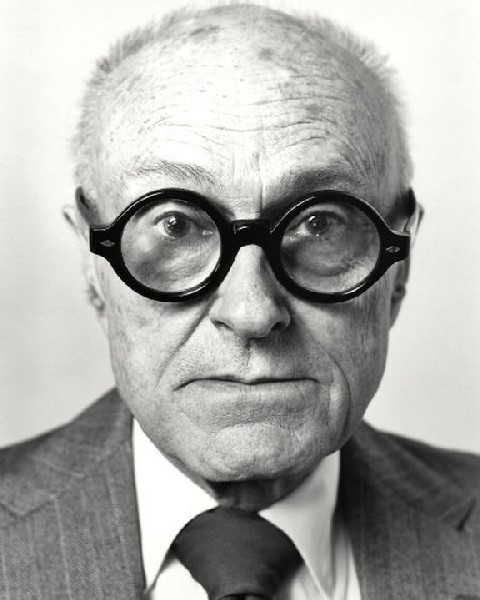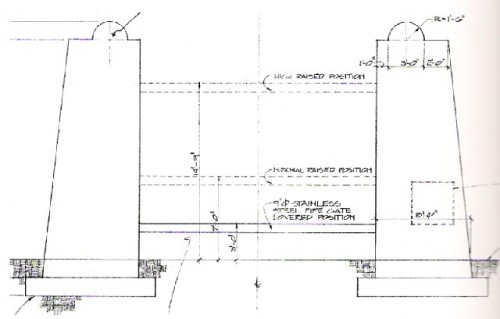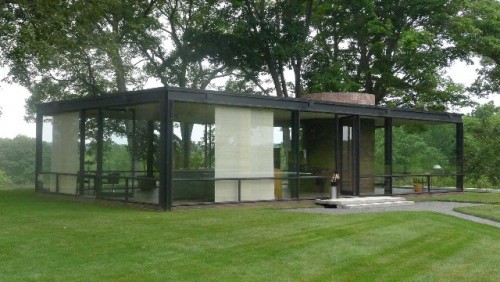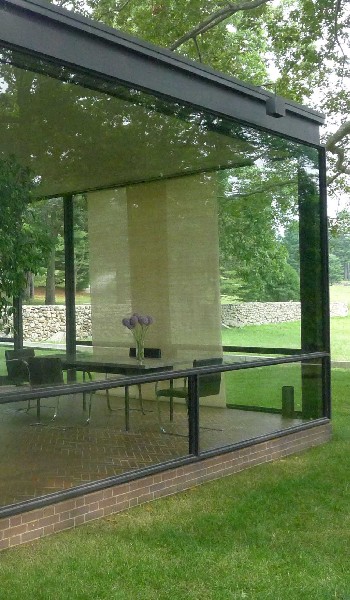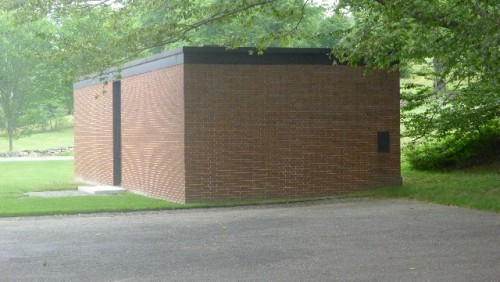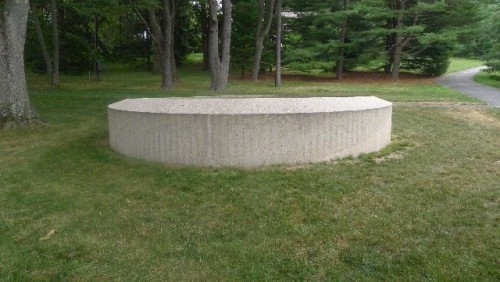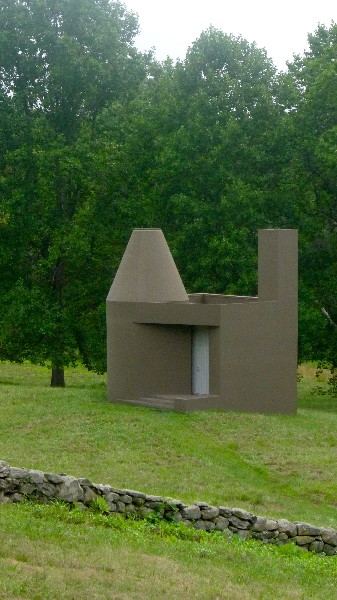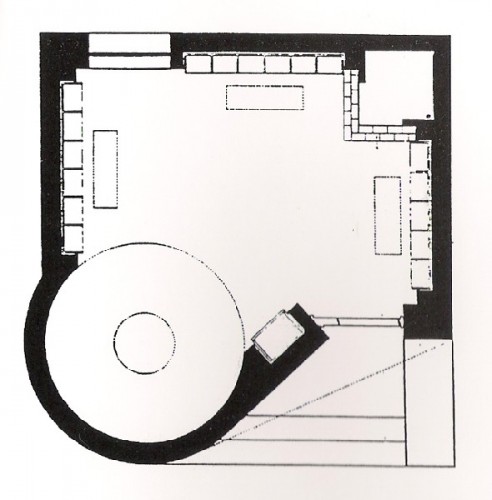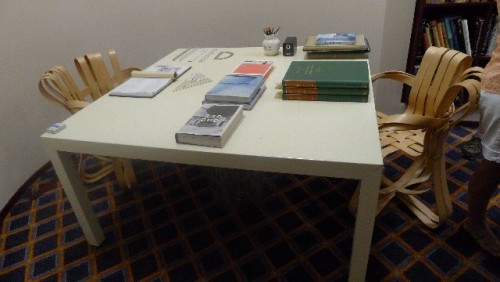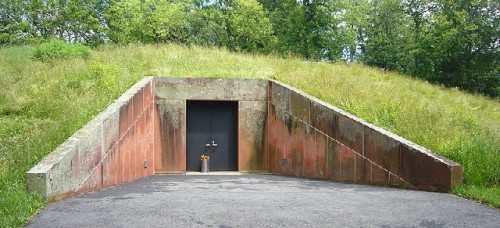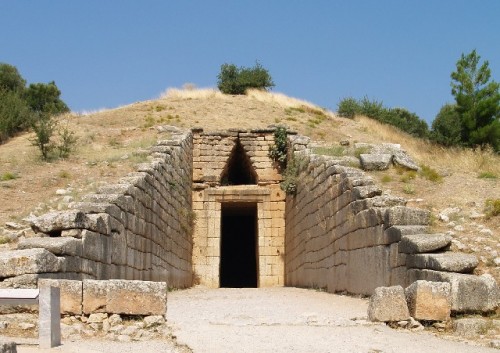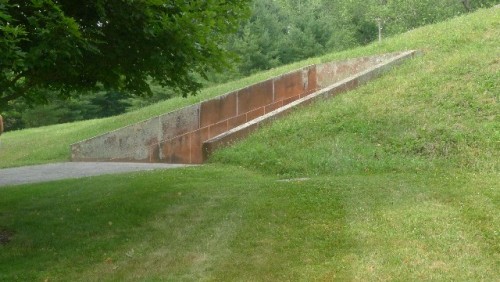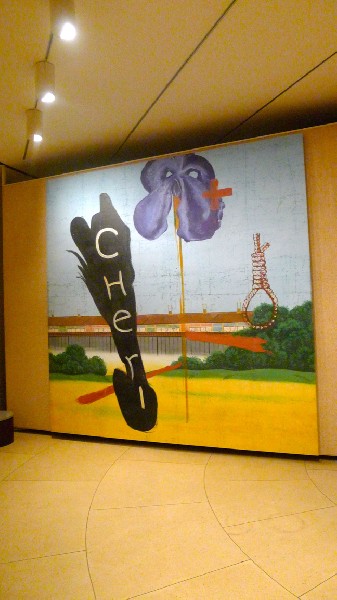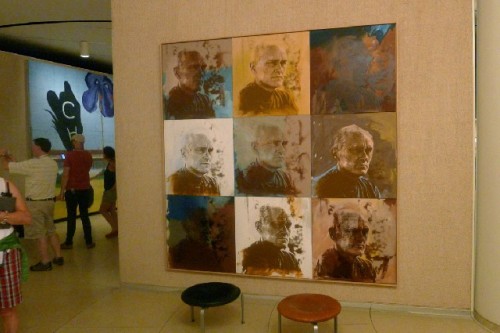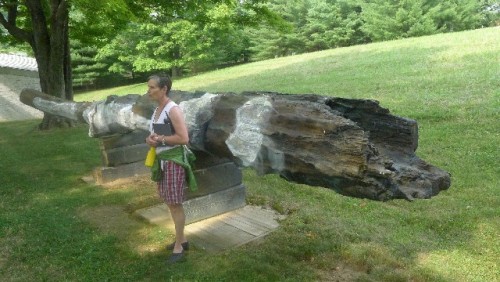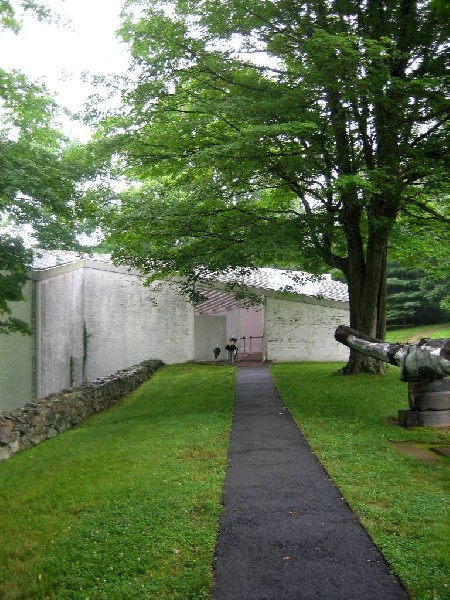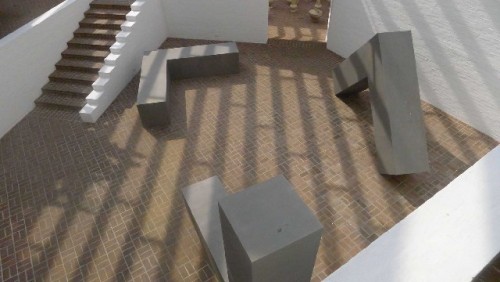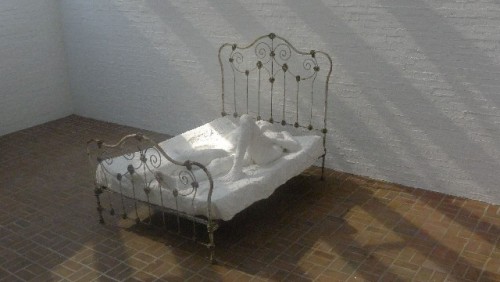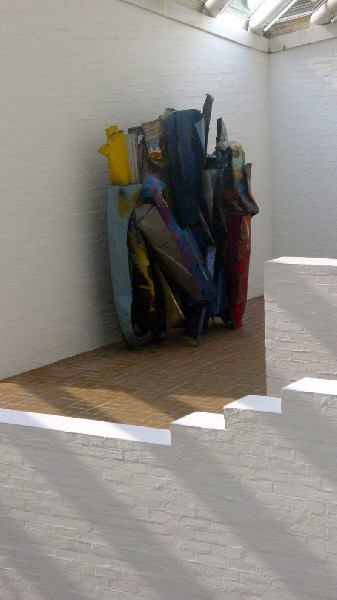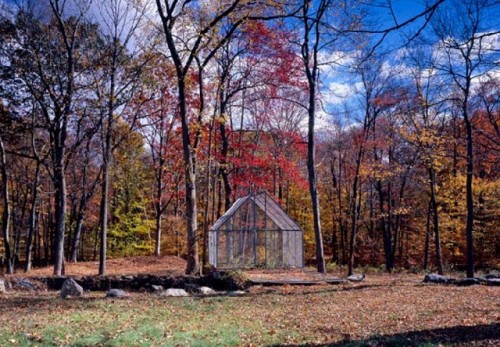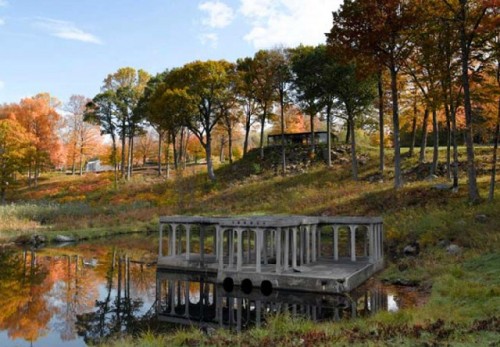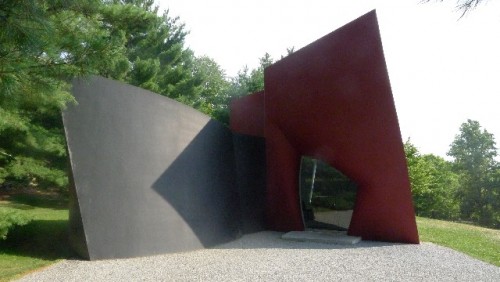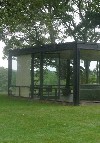The Glass House: Philip Johnson's Masterpiece
From Its Inception A 20th Century Architectural Icon
By: Mark Favermann - Jul 08, 2012
Philip Johnson's Glass House
One of 29 Sites owned by the National Trust for Historic Preservation
Located in New Canaan, CT.
The 2012 Glass House public tour season runs from May 2 - November 30, 2012 (closed Tuesdays). Advance reservations are highly recommended.
Tickets by phone, please call 866.811.4111.
Tours are recommended for children 10 and older based upon tour content and duration. For the comfort and safety of all visitors, children must be at least six years of age to accompany adults on a Glass House tour. Members of the National Trust for Historic Preservation will receive a $15 discount on Pure Glass House and Site Tour tickets. Please present your NTHP membership card upon check-in at the Visitor Center to receive your discount. There are a variety of types of tours that range in cost and duration.
Set on a verdant 49 acre landscaped campus with 13 other structures, in an odd 20th Century way, Philip Johnson's Glass House is a bit like the Sphynx. It is iconic, sublime and rather mysterious.
Johnson's Glass House may be one of the best known residential structures in not only the United States, but the world.
It is by any standard an architectual masterpiece. Aesthetically, materially, visually and even structurally, it is a building form of design importance. It touches various aesthetic and visual chords of anyone who sees it. The Glass House is Philip Johnson's greatest achievement as an architect and as a lifelong creative professional.
Located in posh, New Canaan, Ct., for nearly 60 years, only invited guests were allowed to formally visit it. It was a right of passage for Yale architecture students and others sneaking in to take a look before most often being thrown out. Sometimes, uninvited visitors were warmly welcomed by the aging architect or his partner, a decades younger art curator and critic David Whitney. But this didn't happen very often.
In a way, it was one of those rare structures that everyone interested in the built environment wanted to experience. We could see it in books and magazines and sometimes even newspapers. Now this special place, this unique visual residential statement, is available to visitors.
The building is a visual essay, no, actually a poem, in minimal structure, simple geometry, scale, proportion, and the varying effects of transparency and reflection. It is both in the landscape and part of it. Influenced by ideas of German architects from the 1920s, concepts of "Glasarchitektur," Mies van der rohe's Barcelona Pavilion (1929-30) and earlier designs which Johnson saw for Mies' own glass residential building, The Farnsworth House (1951), it is an elegant quite sublime house of glass that is 56 feet long, 32 feet wide and 10.5 feet high.
The exterior sides of The Glass House are charcoal-painted steel and glass. Its brick floor is 10" above the ground. The interior is open with the space divided by low walnut cabinets. The kitchen, dining and sleeping areas are all in one glass-enclosed room. A brick cylinder encloses the bathroom on one side and a fireplace on the other. This interior structure is the only object to reach from the floor to the ceiling in the space.
Initially, the glass walls caused a problem of mirroring at night that Johnson soon worked out with the prominent architectural lighting designer Richard Kelly (1910-1977). The exterior and the interior were both lit in ways to allow the glass always to be transparent.
The Glass House has a quiet, serene elegance. It is building as form, building as elegant geometry.
The Glass House, outer buildings and grounds were often used as a setting for an artistic and intellectual salon led by Philip Johnson (1906-2005) and his longtime partner David Whitney (1939-2005). Built in 1949, it was an elegant setting for clever, serious and thoughtful conversation as well as a place to discuss current ideas regarding the arts, architecture specifically and contemporary culture in general. It was in Johnson's later years that The Glass House became his personal social interactive platform, the place to wine and dine friends and notable acquaintances.
It should be noted that The Glass House was used earlier on and continually by Johnson as a residence on weekends and not just for entertaining. He lived there before he met David Whitney. It was his private home and he spent the last three years of his life there
Johnson passed away in his bed in The Glass House.
Johnson was a provocative man. Some have called him flamboyant and outrageous. Many even had worse names for him. He was a recognizeably Gay man in a period of closeted individuals. Independently wealthy from a very early age, he was able to travel and do what he wanted.
During the 1930s, he was unfortunately involved in a belief in fascism as well as Naziism, both foreign and domestic. He admired Hitler and the German Reich. Johnson later sorely regretted his decade long embrace of the dark side. He publically apologized for a lack of judgement and his former repugnant sympathies. Apparently, he enjoyed notoriety and controversy no matter what were the short or long-term consequences.
In a more positive way, this flamboyant part of his character was manifested in passionate feeling for architecture, design styles and trends. Despite his negative aspects, Johnson was an architectural scholar who studied and promoted contemporay architecture trends and trendy architects when others were too conservative to champion new creative approaches. He was the first and a long-serving curator of architecture at New York's Museum of Modern Art.
In 1932, due to his extensive European trips while a student at Harvard and his visits to emerging and established major modern European architects, he along with a former Harvard classmate Henry-Russell Hitchcock organized and curated the seminal exhibit at the new Museum of Modern Art (MoMA), Modern Architecture: The International Exhibition. The two co-wrote the catalogue The International Style: Architecture Since 1922. This introduced European modernist design and architectural thinking to the US. It was a stunningly provocative show at the time.
More than a half century later, in 1988, Johnson organized, along with architectural historian Mark Wigley, another major architectural exhibit at MoMA, Deconstructivist Architecture. This show was extremely provocative and controversial as well. The exhibition introduced architects who, until this time, were mostly paper architects, architects who wrote and drew rather than got their projects built. This exhibit brought fame and notoriety to its key practitioners. The architects presented included Peter Eisenman, Frank Gehry, Zaha Hadid, Coop Himmelblau, Rem Koolhaas, Daniel Libeskind and Bernard Tschumi. All have gone on to create major works around the world.
In both the 1932 and 1988 exhibits, two American masters rejected their presence in the various exhibitions. Frank Lloyd Wright withdrew his work from the International Exhibition because initially he felt that his works position was not prominent enough. Wright later stated that his work did not relate to the others. Frank Gehry in the 1988 show felt that he was being categorized in a way that was incorrect. Johnson knew both architects well and probably relished the controversy stirred by each's rejection of their involvement.
Johnson's architecture has been often criticized for being overly style-conscious. His major building designs seemed to change with every new architectural fashion or design fad. Johnson acknowledged those he considered important trend-setters. He, thus became a style-maker by his writing and speaking. He also had a deep desire for his own work to be considered cutting-edge.
Architect/critic Peter Eisenman, in an introduction to Johnson's Writings (1979) stated, Johnson's architecture was the "ideal model of a more perfect society." A throw-back to the traditional gentleman architect, he was not a little "d" democrat in any sense. An inheritor of great wealth through stock in Alcoa Aluminum, his work never had to pay the bills. Therefore, his vision and design gesture could be grand and often grandiloquent.
Neither his major project designs (AT&T now Sony Building, Boston Public Library addition, The Crystal Cathedral, Lipstick Building, Penzoil Place, etc.) nor his architectural writings show much of a concern for social considerations or practical aspects often connected to modern architecture practice. Rather than the now ubiquitous less is more of his mentor/collaborator/competitor, Mies van der rohe, Johnson had most of his work speak to the notion that style is everything. To him, design fashion was more important than objective function. Yet, Johnson's Glass House is much more.
In an aesthetic sense, like its predecessor, Mies van der rohe's Barcelona Pavilion, The Glass House is horizontally rectilinear. Unlike The Barcelona Pavilion, due to material, color and setting choices, The Glass House feels much more residential and warm. Though there is a crisp angularity to the structure, the inside/outside composition resonates a certain feeling of humanity that the larger Barcelona Pavilion does not. Instead, the earlier building reads elegantly institutional while The Glass House feels stately domestic.
This is why The Glass House is so important: it transcends fashion and trendiness. It is a beautiful now as when it was first built. The proportions, the design restraint and the subdued colors of its fabrication elements underscoring its sense of place make it a special structure, a structure to be admired.
Johnson referred to the landscape that The Glass House was set in as very expensive wallpaper. Over 50 years, the campus expanded to include 47 acres, a canvas for the 14 structures built upon it. Johnson considered himself to be a landscape architect as well as an architect. He used the 18th and 19th century stone walls and barn foundations along with the mature trees on the site as organizing principles for the landscape.
His clearance of second growth trees revealed views and shaped vistas for his structures, follies, or natural elements. Johnson referred to these as "events on the landscape." The landscape of the campus is influenced by his Ohio childhood, 17th and 18th great European landscape paintings and English gardens. In fact, the only painting in The Glass House is a landscape painted by Nicholas Poussin, The Funeral of Phocion (1648). The horizon line in the painting is mirrored by the house's surrounding landscape.
The Brick House was built in parallel to The Glass House in 1949. Rather nondescript except for porthole windows in the back, it held utilities and guest rooms. The two houses were connected by pipes and wiring.
The Brick House was originally to be attached to the main house. After 29 different studies, Johnson came up with the layout as it is today. The architect carefully crafted the space to balance the square and circular shapes of the landscape/building configuration. The Brick House was conceived of and used as a guest house from the beginning.
The Brick House was flooded several years ago and is undergoing restoration. It appears to be the structure on the site in the worst condition and is being restored.
Built into a grass-covered berm topped by a low parapet, The Painting Gallery (1965) is a clever architectural riff on contemporary architectural historicism. It is an entrance to the underground, a tomb/shelter based upon what is referred to as either the Bronze Age Treasury of Atreus or Agamemnon's Tomb at Mycenae, Greece that was constructed around 1250 BC. Johnson used the minimalist modernist aesthetic in creating it, very simple and strongly articulated by its red sandstone.
Based on a plan that incorporated three circles of different sizes, the interior of the gallery was an attempt by Johnson to create a new paradigm for small museum gallery changeability and flexibility. However, he realized that it was not practical in terms of necessary security.
On its exterior, The Sculpture Gallery is more of a brutalist structural statement. There is a rawness to its concrete surface, yet a bright lightness to its skylit, five-level interior. Johnson said that he based its stairs, walls and level changes on structures and streets in the Greek Isles. He was very pleased with the light and shadows within the space and even considered moving his residence there. But, he questioned,"Where would I put the sculpture?"
Johnson was an early and major collector of contemporary art. From 1960 onward, he and David Whitney collected and donated works to primarily the Museum of Modern Art and other institutions. They donated over 2000 pieces of art and design to MoMA. When Johnson died, Whitney organized auctions and sales to help finance The Glass House campus endowment. Though much younger than Johnson, he died just six months after him.
The Study/Library is a Post-Modern structure. Built about the same time as the Chippendale, broken pediment/Grandfather Clock shaped Sony Building (formerly the AT&T Building) in NYC which opened in 1984, the Study/Library evokes elements from the vocabulary of shapes that architect Michael Graves worked with at the time. Surprisingly, Johnson had problems with the color of the structure, both interior and exterior, and hired color consultants to advise him.
A minimalist site-specific sculpture by Donald Judd punctuates the space between the entrance gate and The Glass House and The Brick House. This 12.5 ' wide reinforced concrete structure is in the form of a large circle or ring with an opening in the center. It is a round, geometric, counter-balance to the two rectangular houses set beyond it, one transparent and the other solid masonery. The walls of the piece vary in height from 36" to 48" and include two surface planes. One is flat and the other is canilevered parallel to the landscape.
The untitled 1971 piece is deteriorating. Apparently, the supervision of its installation was done by inexperienced underlings who allowed two truck loads of concrete to be poured on two different days. Considering the well-known fastidiousness of Johnson and Whitney, this seems quite surprising. However, perhaps this is on purpose? The 40 year old fabrication mistake has been left intact and was maybe considered rendered intentional to underscore human or artistic nonperfection juxtaposed with the near perfection of its close neighbor, The Glass House. Myth-building or just a sloppy mistake?
With no right angles, the last structure added to the campus Da Monsta exemplifies ideas of descontructivist fragmentation. This is done by purposeful manipulation of the structure's surface. Non-rectilinear shapes distort and dislocate architectural structure and the building envelope. Our tour guide was very uncomfortable standing in the building and had to lean on the glass door to be better oriented. This is truly architecture as sculptural form. Here Johnson tried to evoke a form that stimulated unpredictability and a bit of his "safe danger."
Nearby to Da Monsta at the entrance to the campus is the 20' high Entrance Gate. Completed in 1980, it has a Post-Modern motif. The Gate is made up of two big plinths with slightly moulded, round, top matching designs connected by a single beam fashioned from a sail boat mast that is raised and lowered through a simple pulley system.
Included in the landscape, a Ghost House was created for Whitney for his gardening (1984). It is constructed from galvanized fence materials. A large, fairly awkward, vertical sculptural tower (30' high), The Lincoln Kirstein Tower, was built to celebrate Johnson's Harvard College friend, patron and supporter of the choreographer Balanchine and the New York City Ballet. Though he did not take credit for it, Johnson probably designed it and had a contractor build it. He enjoyed climbing the structure and referring to his notion of a stair to nowhere with a sense of "safe danger."
There are three much more conventional or vernacular houses also on the campus. These are named Popestead, Calluna Farms and Grainger. One is now the home of the director and another was used for female guests including Johnson's sister, female friends and colleagues.
A deteriorating floating Lake Pavilion, built in 1962, is set on the artificial algae-covered artificial lake down the hill from The Glass House. The Pavilion was created by Johnson as a picnic and conversation area. In the tradition of architectural follies in gardens, The Pavilion's scaled down size plays with the viewer's sense of perspective and distance. This relates to Baroque architect Borromini's work, an architectual interest of Johnson's.
The entire campus is an exercise in sophisticated personal taste and eccentricity. And that is what makes The Glass House and its outer structures so fascinating to see and experience.
Since his death in 2005, at the age of 98, Philip Johnson's masterpiece has belonged to the nation as a National Trust for Historic Preservation site. There is a thoughtful and friendly staff headed up by a new and energetic director, Henry Urbach.
Mr. Urbach says in his mission statement for the historic architecture site, " Philip and David were famously curious, generous, and eager to try new things on the grounds of The Glass House. Nearly everything was in constant flux as they explored ideas for making a kind of ideal space, a bucolic yet fully metropolitan sanctuary in the hills of Connecticut. Juxtaposition, experimentation, interdisciplinary pursuits: these are built into the DNA of The Glass House and cannot be overlooked in favor of static models of preservation.
"Now, as we prepare for the next stage in the life of this complex, even enigmatic place, we are exploring new ways to preserve not only bricks and mortar — a significant challenge as, for example, we raise funds for necessary roof repairs and embark on a campaign to restore The Brick House — but also to preserve and reanimate the spirit of the site. Our success, in this sense, will not only be measured by the visitors we can draw and what their experiences will mean, but also the kinds of creativity and knowledge we are able to nurture, and the degree to which we can foster and enrich contemporary culture."
In other words, Mr. Urbach's serious intention is that The Glass House campus not remain primarily an architectual museum of the recent past, but instead a living, growing institution that fosters creativity through design and architectural education, special events, lectures, conferences and expanded creative programming. Rather than just a museum of structures and contemporary art, The Glass House could become the impetus for an architectural labatory of design experimentation and imaginative exploration.
This would be a great reverberating legacy of Philip Johnson's positive aspects of a very long career and life, a tribute to David Whitney and to their mutual generosity toward and passion for creativity, landscape design and the built environment.
Note: Of the 29 sites owned by The National Trust for Historic Preservation, only two are contemporary or modern properties. Besides The Glass House, Mies van der rohe's Farnsworth House in Plano, Il. is also a site.
The Glass House now offers AIA Continuing Education learning units on the following tours: Site, Focus, Extended (2 units per tour).
Other related articles:


